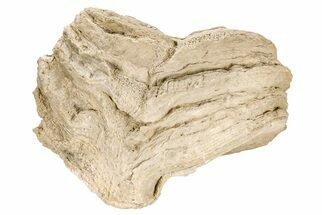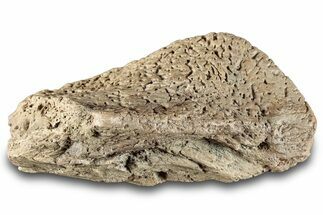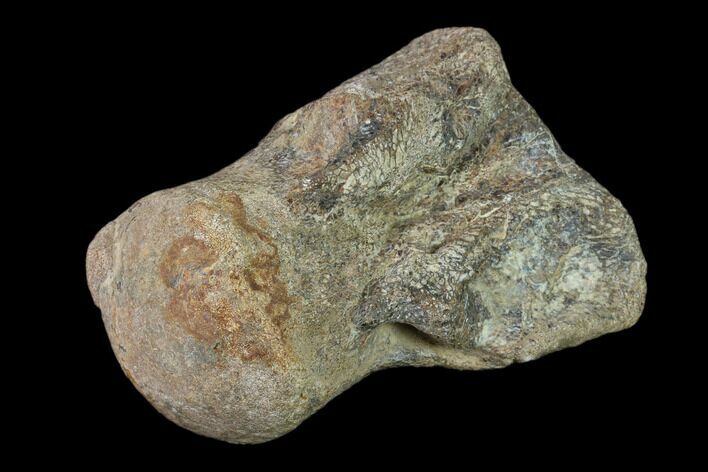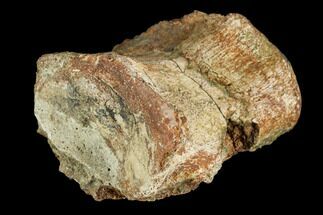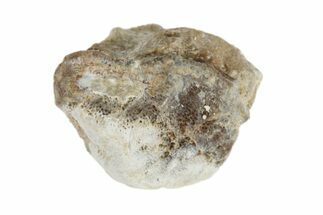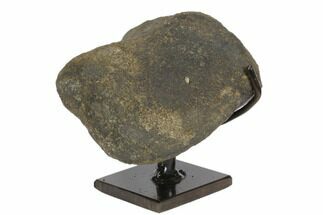This Specimen has been sold.
3.4" Fossil Mosasaur (Platecarpus) Caudal Vertebra - Kansas
This is a 3.4" long caudal vertebra of a Mosasaur (Platecarpus sp.) from the Late Cretaceous, Smoky Hill Chalk, Gove County, Kansas. Platecarpus is an extinct aquatic lizard belonging to the mosasaur family. Fossils have been found in the United States as well as a possible specimens in Belgium and Africa. It reached lengths of up to 14 feet long, half of that length being its tail. Platecarpus probably fed on fish, squid and ammonites. Like other mosasaurs, it was initially thought to have swam in an eel-like fashion, although a recent study suggests that it swam more like modern sharks.
The Smoky Hill Chalk Member of the Niobrara Chalk formation is a Cretaceous conservation Lagerstätte, or fossil-rich geological formation, known primarily for its exceptionally well-preserved marine reptiles. It outcrops in parts of northwest Kansas--its most famous localities for fossils--and in southeastern Nebraska. Large, well-known fossils excavated from the Smoky Hill Chalk include marine reptiles such as plesiosaurs, large bony fish such as Xiphactinus, mosasaurs, pterosaurs, and turtles.
SPECIES
Platecarpus sp.
LOCATION
Gove County, Kansas
FORMATION
Niobrara Formation
SIZE
3.4" wide
CATEGORY
SUB CATEGORY
ITEM
#136661
We guarantee the authenticity of all of our
specimens. Read more about our
Authenticity Guarantee.
specimens. Read more about our
Authenticity Guarantee.
 Reviews
Reviews

